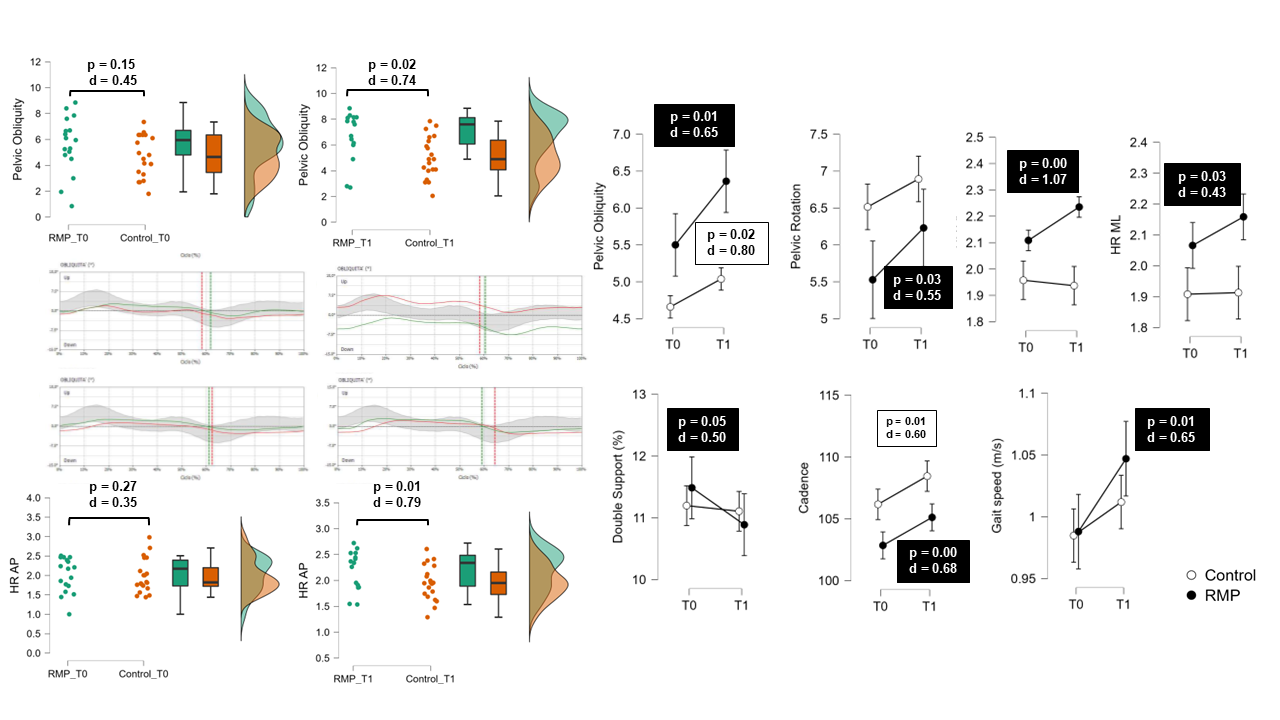Effetti immediati dell’esercizio di allungamento dei muscoli rotatori del tronco sui parametri del cammino in soggetti con malattia di Parkinson: uno studio clinico randomizzato controllato
Immediate effects of trunk rotator stretching exercise on gait parameters in subjects with Parkinson’s disease: a randomized clinical trial
Introduction
Reduced trunk rotation and pelvic mobility, which are associated with a higher risk of falling and one of the best predictors of gait improvement following rehabilitation [ 1 ], are characteristics of subjects with Parkinson’s disease (swPD) [ 2 ]. The Progressive Modular Rebalancing System (PMR) proved to be an effective multimodal exercise therapy strategy with a trunk mobility focus that can enhance the effects of cognitive strategies in swPD gait training [ 3 ]. The purpose of this study was to compare the immediate effects of PMR trunk rotator stretching exercise to active upper trunk rotation exercise (Control) on gait parameters in swPD.
Methods
An expert neurologist screened 40 swPD for inclusion before randomly assigning them to the PMR or control exercise groups using sealed envelopes. Gait trials were collected using a magneto-inertial measurement unit placed at the lower back before (T0) and immediately after (T1) a single exercise session. Spatio-temporal parameters, pelvic kinematics, and harmonic ratios (HR) in three spatial directions were calculated. Four physical therapists who were not aware of the gait assessment carried out the PMR or control exercise. The entire procedure took between 10 and 15 minutes. To assess differences between groups, the independent sample t-test or Mann-Whitney test was used. Within-group differences were assessed using the paired sample t-test or the Wilcoxon test.
Results
At T1, there were significant differences in pelvic obliquity and HR in the antero-posterior (AP) direction between the PMR and control groups (Fig. 1). The PMR group improved in pelvic obliquity, pelvic rotation, HR in the AP and medio-lateral directions, gait speed and cadence, and double support time. Pelvic obliquity and cadence improved in the control group (Fig. 1).
Discussion and Conclusion
PMR trunk rotation stretching was more effective than upper trunk rotation exercise in improving pelvic mobility and harmonic ratio during gait in swPD patients in a single exercise session. Implementing a PMR trunk rotation stretching exercise into a gait rehabilitation program may enhance the effects of gait training by improving pelvic mobility and trunk behavior during gait.
REFERENCES
Serrao, Mariano et al. “Progressive Modular Rebalancing System and Visual Cueing for Gait Rehabilitation in Parkinson’s Disease: A Pilot, Randomized, Controlled Trial With Crossover.” Frontiers in neurology vol. 10 902. 29 Aug. 2019, doi:10.3389/fneur.2019.00902
Trabassi, Dante et al. “Machine Learning Approach to Support the Detection of Parkinson’s Disease in IMU-Based Gait Analysis.” Sensors (Basel, Switzerland) vol. 22,10 3700. 12 May. 2022, doi:10.3390/s22103700
Serrao, Mariano et al. “Prediction of Responsiveness of Gait Variables to Rehabilitation Training in Parkinson’s Disease.” Frontiers in neurology vol. 10 826. 2 Aug. 2019, doi:10.3389/fneur.2019.00826
Castiglia, Stefano Filippo et al. “Harmonic ratio is the most responsive trunk-acceleration derived gait index to rehabilitation in people with Parkinson’s disease at moderate disease stages.” Gait & posture vol. 97 (2022): 152-158. doi:10.1016/j.gaitpost.2022.07.235

